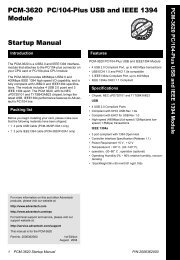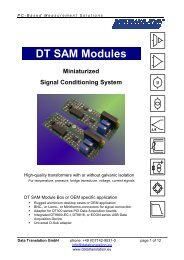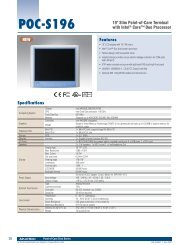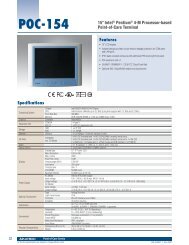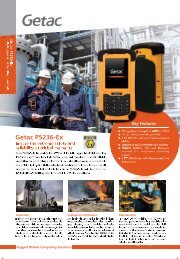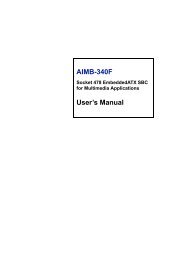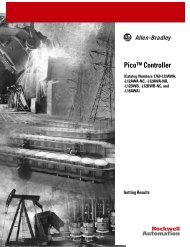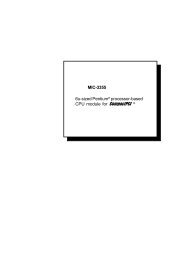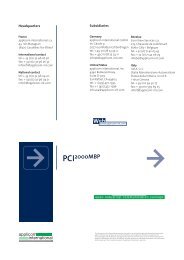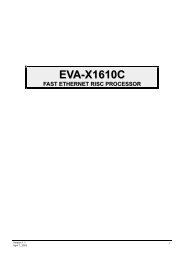1747-6.22, Backup Scanner User Manual
1747-6.22, Backup Scanner User Manual
1747-6.22, Backup Scanner User Manual
You also want an ePaper? Increase the reach of your titles
YUMPU automatically turns print PDFs into web optimized ePapers that Google loves.
RIO Block Transfer 7-115<br />
Your SLC control program can monitor the block transfer by<br />
examining the M1 status flags. They indicate when the scanner<br />
has started processing (EW and ST flags) the BT and whether<br />
the BT operation completed successfully (DN flag) or failed (ER<br />
flag). Your SLC control program takes different actions based on<br />
these status flags.<br />
4. If the BT completes successfully, the scanner fills in the M1 BT<br />
length status field. If it was a BTW operation, the BTR data area<br />
of the M1 BT buffer is not updated. If it was a BTR operation,<br />
the new BTR input data (based on length) is placed in the BTR<br />
data area of the M1 BT buffer and the unused buffer area clears.<br />
The DN status flag then sets to indicate to the SLC control<br />
program that the BT operation completed successfully and that<br />
the M1 input status buffer has been completely updated.<br />
5. If the BT fails, the length field and BTR data area are not<br />
updated (length remains cleared). The error code field indicates<br />
the problem type. The ER flag sets to indicate to the SLC control<br />
program that the BT operation was unsuccessful.<br />
6. The SLC control program must indicate to the scanner when it is<br />
done processing the M1 input/status buffer (because DN or ER<br />
was set) so the corresponding M0 output/control buffer can be<br />
re-used for another BT operation. The SLC control program<br />
indicates that it is through processing when it clears the EN flag.<br />
7. When the RIO scanner detects that the EN flag has been cleared<br />
by the SLC control program, it then clears the EW, ST and DN or<br />
ER flags. This ensures that the status flags in the M1 input status<br />
buffer are not reflecting the results of the previous BT operation.<br />
Note that the other M1 BT Status buffer fields, such as length,<br />
error code, and BTR data are not cleared when the scanner clears<br />
the status flags. These fields are only updated when the scanner<br />
has processed a BT operation as indicated by the DN or ER flag.<br />
For example, if there was a problem with a BT operation, the<br />
error code will remain in the M1 BT buffer until the next BT<br />
operation causes it to be changed (cleared if DN is set or an error<br />
code if ER is set). Therefore, the SLC control program should<br />
precede the examination of the error code field with the ER flag.<br />
Publication <strong>1747</strong>-<strong>6.22</strong>




